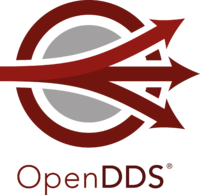Case Study
Rugged and Reliable IoT Device Integration
U.S. Army maintains tactical advantage with state-of-the-art IoT edge solution that supports secure, real-time communications between combat vehicle systems in the field
Military combat vehicles are IoT edge platforms on wheels — connected inside and out to intelligence data, weaponry systems, geolocation information, and more.
The Client
A United States defense contractor that supports the United States military’s vehicle-based systems with hardware and software for intelligence gathering, reconnaissance and surveillance, information integration, decision support, and target management
Relevant Background
A modern combat vehicle fleet is critical to the success of the United States Armed Forces. In particular, the United States Army’s differential advantage over adversaries derives from the combination of well-led, well-trained soldiers and advanced technology.
Combat vehicles are one such example of how speed, protection, and technical sophistication give our armed forces the ability to gain positions of relative advantage while reducing the likelihood of casualties in combat.
The Challenge
In order to maintain a tactical advantage, modern combat vehicles must be equipped with state-of-the-art communications systems that allow for instantaneous communications between disparate components, including sensors, embedded hardware, mast operations, map and intelligence data, alarm and weaponry systems, telemetry subsystems, and more.
These devices consist of a variety of sensors and actuators that must be monitored and controlled in real-time with implications for security, safety, and agility.
To complicate matters further, each system component varies in terms of its programming language, platform, and operating system.
Integrating the components of such a vehicle requires an IoT edge solution with industrial grade capabilities.
The Land Systems Division approached Object Computing seeking a way to integrate these critical system components using a low-latency data connectivity protocol capable of scaling across this complex ecosystem of devices at ultra-high speed with extreme reliability.
From Edge to Enterprise
The integration of diverse vehicle components – whether the vehicle is for consumer, commercial, or military use – is one example of the powerful and versatile Internet of Things (IoT) edge solutions developed by Object Computing.
Devices
Embedded Linux
Android / iOS
Embedded RTOS
Sensors
Data Collection
Dashboards
Alerts

Connectivity
Standard Protocols
MQTT / DDS
WebSockets
Processing & Storage
Edge / Gateway
On-Prem
Cloud
The Solution
We architected and developed a complete solution that included requirements analysis, architecture, device integration, and testing for interoperability across various technologies, including sensors, cameras, antennas, controllers, and displays. Networking technologies included Ethernet, serial, and CAN Bus.
Our team collaborated with the client to understand their requirements for distributing data and control throughout the vehicles, with a focus on achieving maximum performance and scalability while remaining cognizant of security constraints.
Myriad messaging alternatives are available to support an integration solution such as this one, all with complex advantages and disadvantages. We provided a vendor-neutral evaluation of available technology platforms and delivered our expert recommendation surrounding open source alternatives. The deliverable included an architecture that satisfied all requirements while simultaneously remaining maintainable and extensible.
Specifications
Languages
Java, C++, C#
User Interfaces
JavaFX, C#
Datastores
Hibernate and SQLServer
Geographic Tools
WorldWind and Geotrans
Middleware and Embedded Technologies
OpenDDS, Ethernet, serial and CAN Bus communications, custom drivers displaying video from proprietary hardware, PIC Microcontroller programming

U.S. military engagements often require maximum endurance in rugged, hostile environments characterized by extreme temperatures, restrictive terrain, and unpredictable impediments.
OpenDDS, the leading Open Source implementation of the Object Management Group (OMG) Data Distribution Service (DDS), was selected as the connectivity framework for this project because it meets the performance, safety, interoperability, and security requirements necessary for precisely handling mission-critical data sets across system components.
Outcomes
- Accelerated agility and decision-making ✔
- Improved operational efficiency ✔
- Automated device communications and outputs ✔
In today's rapidly evolving technology landscape, the opportunities are limitless. From driverless vehicles to defense, healthcare, energy, and beyond, our team stands ready to support your transformation through leading-edge technologies and accelerators.

Consulting & Strategy
Outcome-focused, real-world practicality combined with courageous innovation

Technology & Transformation
Expert engineering from project initiation to deployment and beyond

Technical Leadership & Support
Empowerment to scale your solutions long after our engagement has ended
